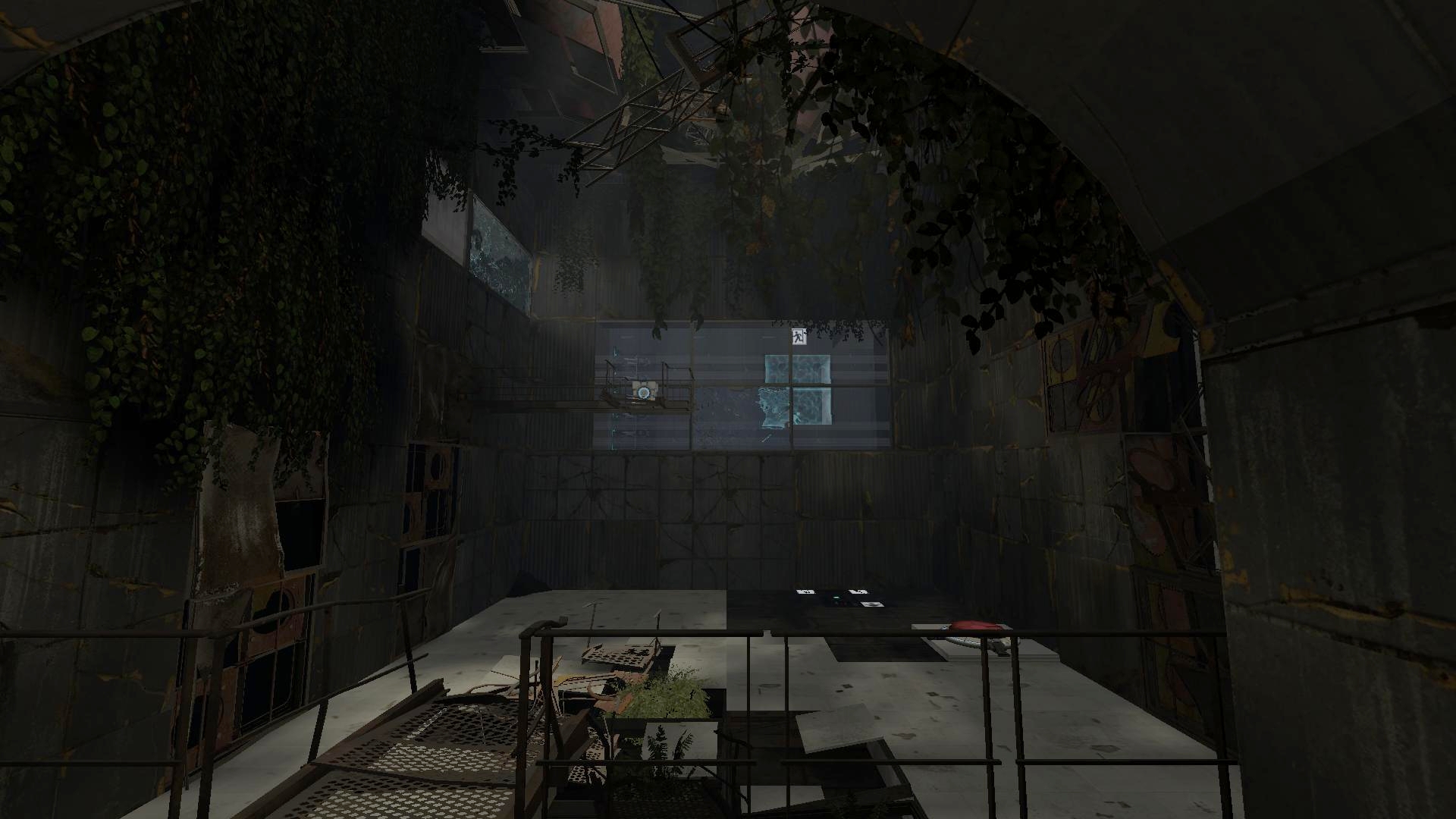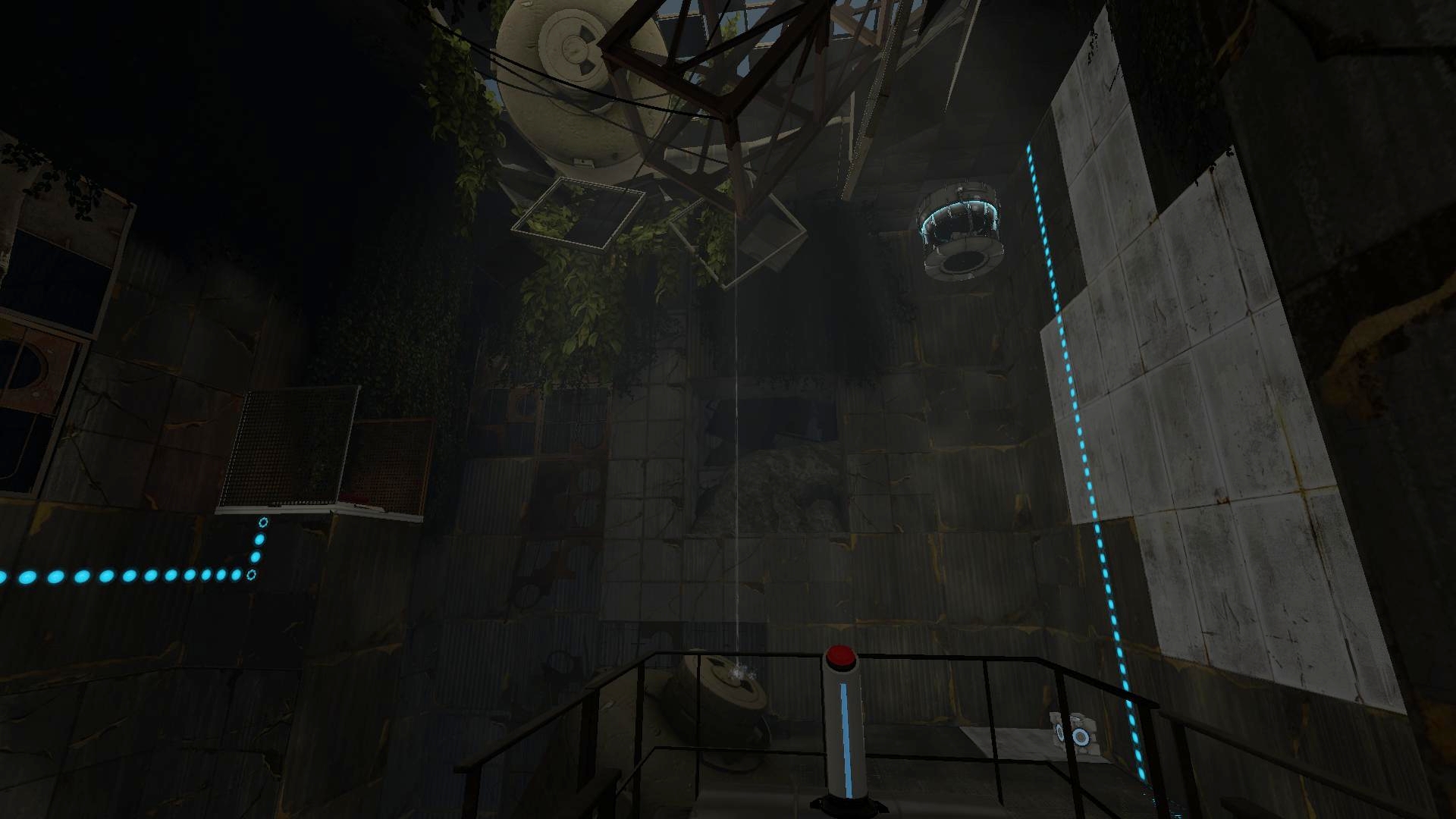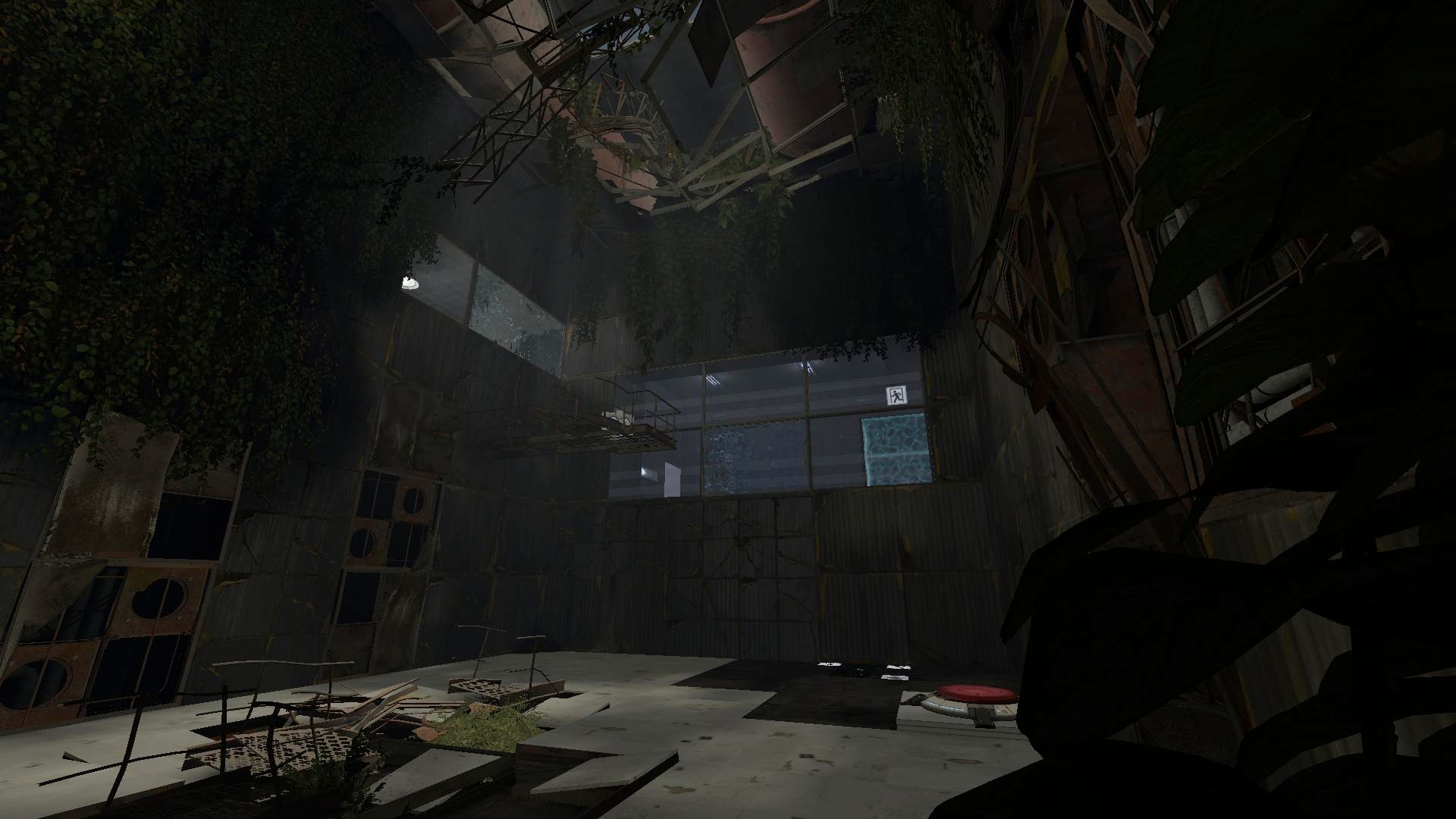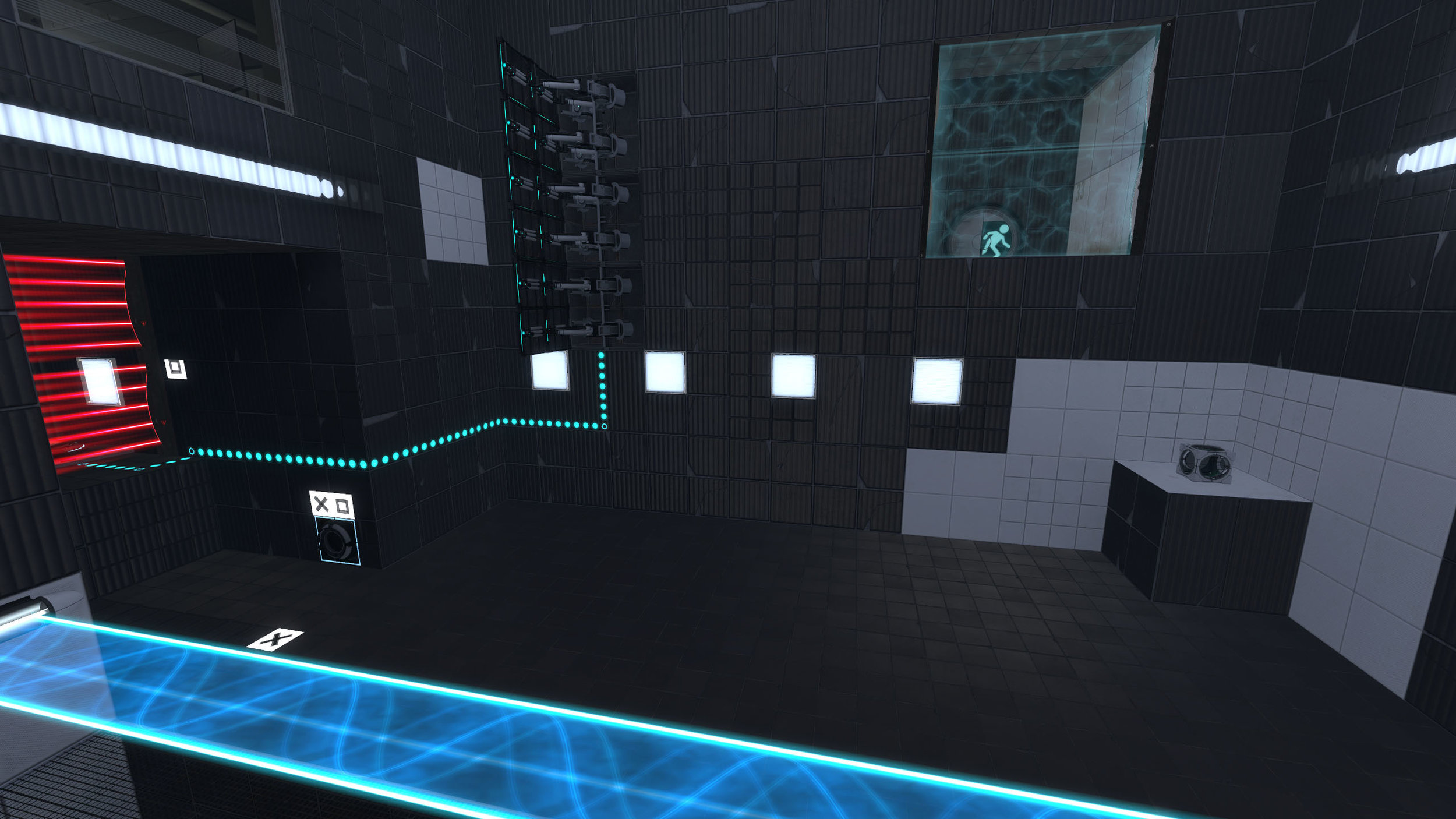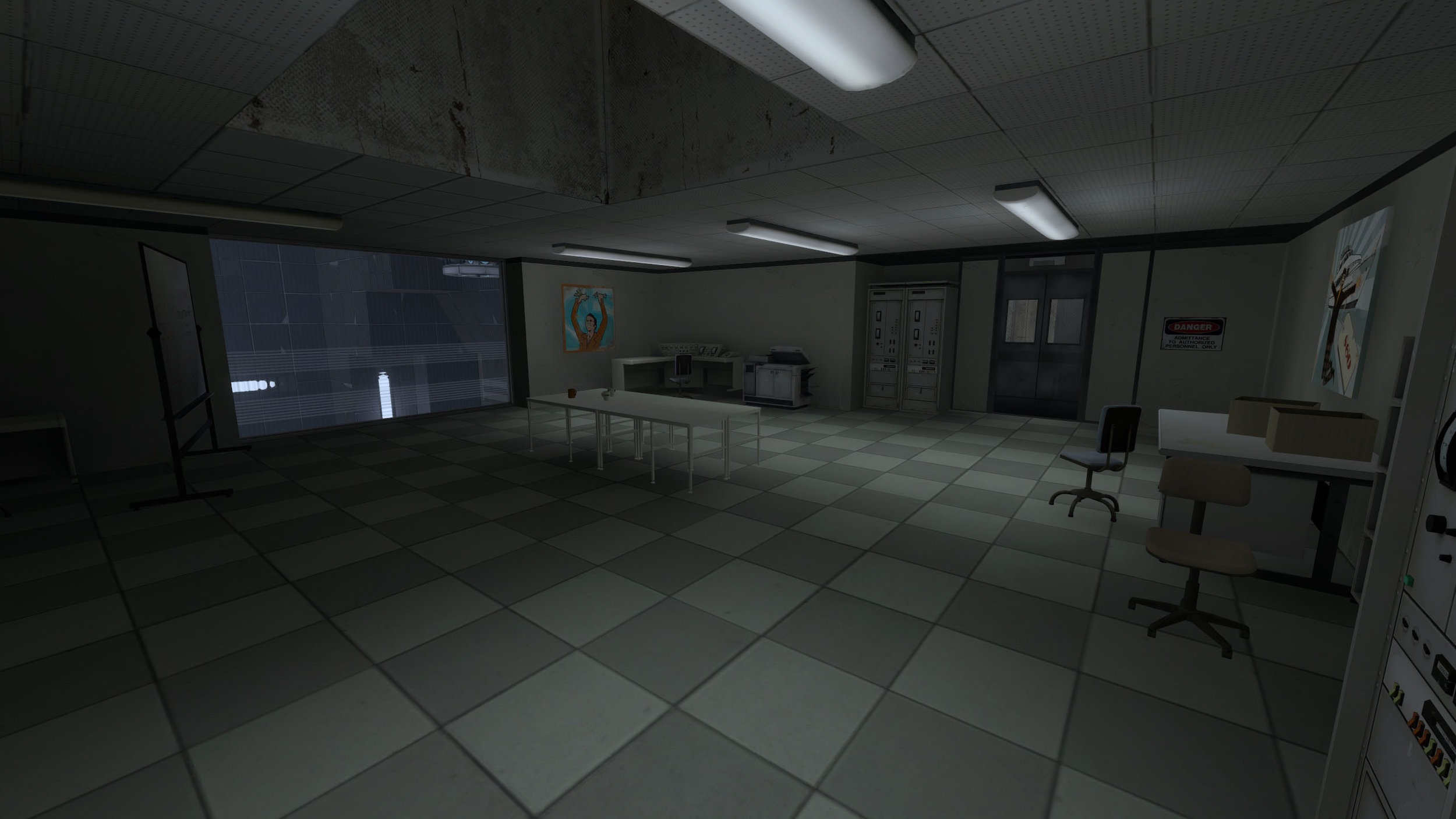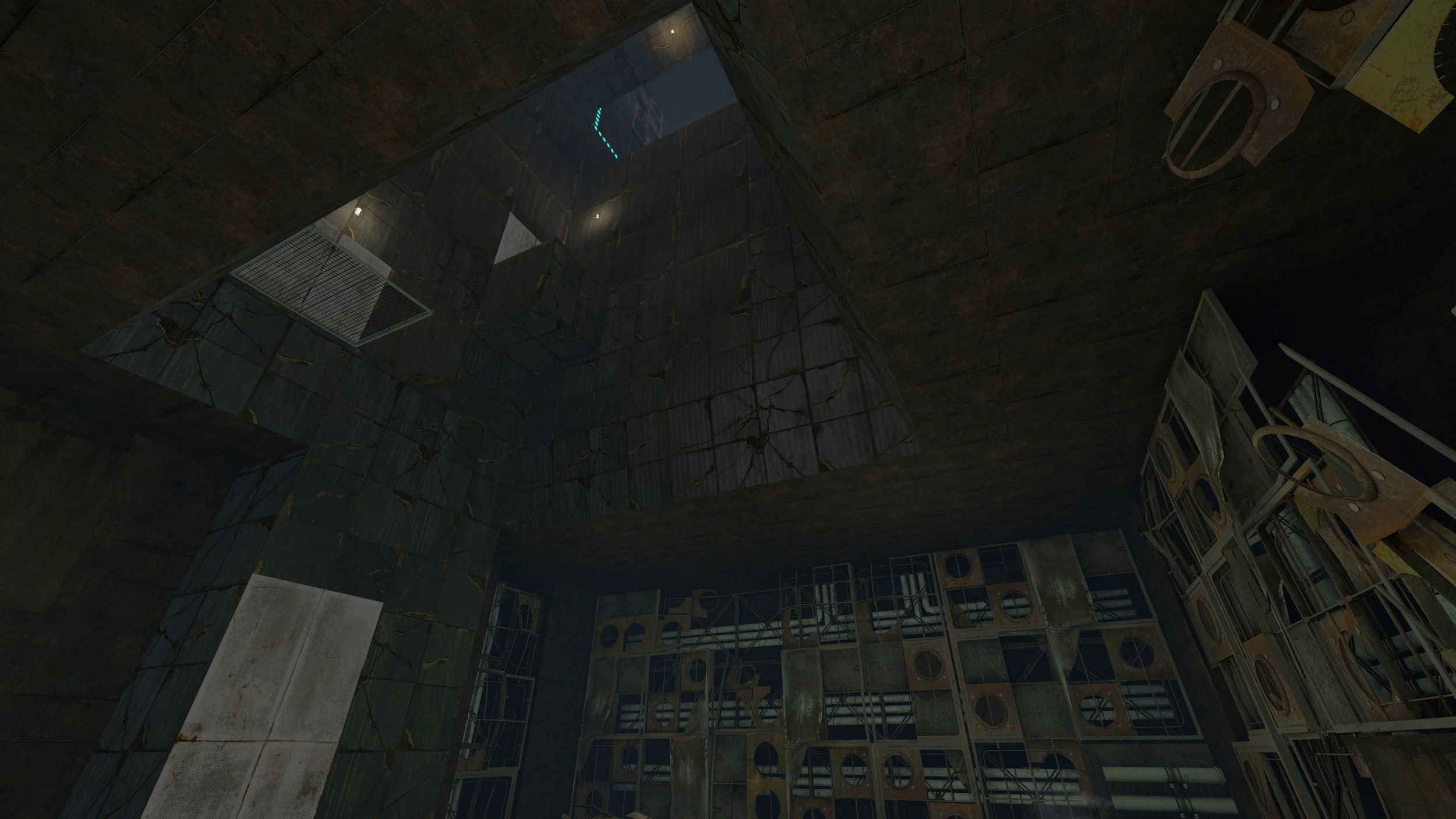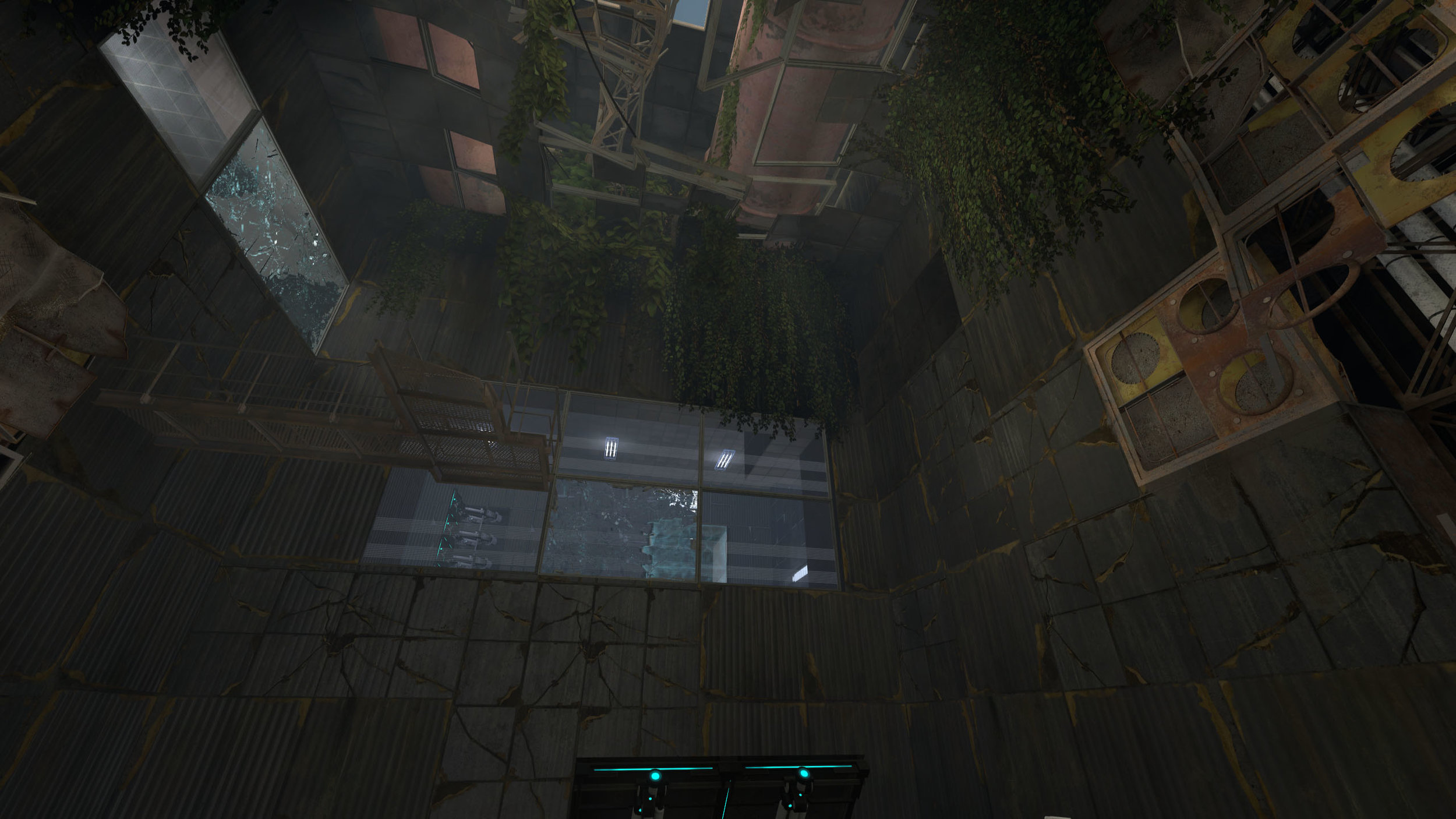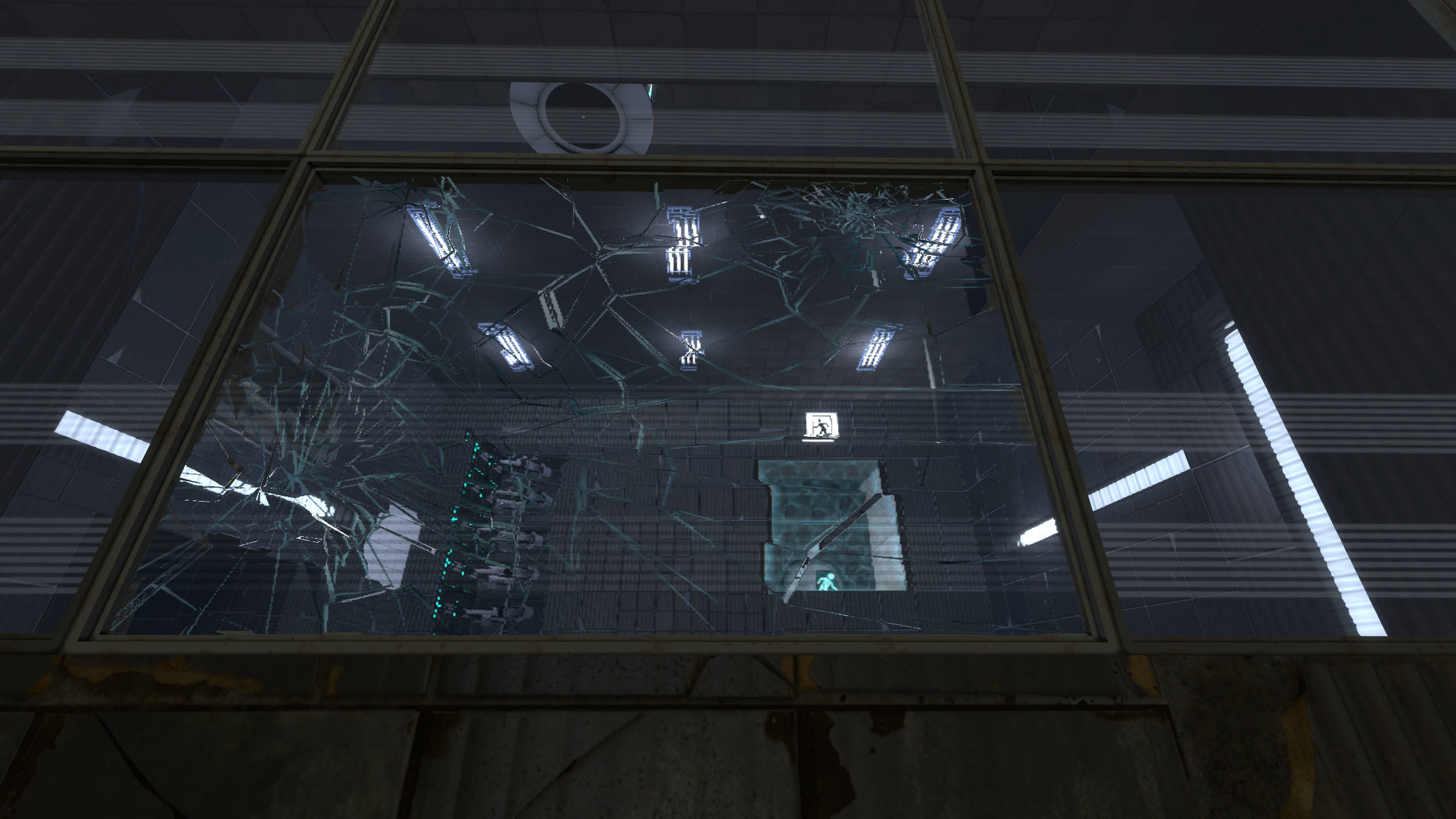Portal 2: Shattered Vault
Summary:
In the Shattered Vault I aimed towards creating a map that would appeal to experienced Portal 2 players as well as players less familiar with the game. Reaching a a broad audience is challenging but possible with the right planning. Using physics based puzzles and a circular layout the level has been a success with over 2300 subscribers gaining a approval rating of 92% on steam.
Puzzles and Solutions
The core essence of any Portal 2 Level are the puzzles. The game allows for both puzzles disguised as environment and for more obvious ones. Using a broken down aesthetic I could use both. The rooms that followed chamber structure would be more obvious puzzles and the ones that "broke" the chamber design would use a more disguised design.
The first room used physics based approach setting the theme for the level
And also introduced the custom breakable glass mechanic
Using gravity makes the puzzles more intuitive and enabled re-use of areas
Here I re-used the trap as a way for the player to solve the puzzle
Exploring gravity - here as a Portal variant of Basketball
And as a Grand Final I re-used pieces from the previous in the last puzzle
Pre-production - Break out of Overgrown Physics :
In order to gather my thoughts on what I wanted to accomplish I looked to the original Portal 2 game. I found that preferred the classic physic based puzzles in favor of the more esoteric ones. From a story telling perspective I found the part where the player breaks out of the established test chambers and goes behind the scenes of the Portal universe most captivating. I found the aesthetics of the breakout levels less appealing and instead got attached to the overgrown style used in the beginning of the game. The overgrown style could easily be integrated to a story of broken, half-functional chambers and in the same time prove a interesting environment to build in. But as with all things there are strengths and weaknesses to consider.
First iteration of room placement and flow
Classic physics based puzzle:
Pros Intuitive, using few elements, classic
Cons Experienced players might find it boring
Breakout Scenario
Pros Incorporated storytelling, diverse design possibilities
Cons Needs several rooms to convey a story
Overgrown style
Pros Fits with a scenario storytelling, aesthetically pleasing
Cons Complex and time consuming. Requires custom dressing
The scenario and style would require custom work in Hammer. To counter the slow iteration process in Hammer I opted to start the blockout in the built-in PTI editor since it is much faster to use.
Prototyping - Closed Room Approach
The PTI proved a excellent tool to try out isolated room concepts. While limited I could flesh out ideas to a playable state in hours. After experimenting with isolated rooms I picked bits I liked and combined them in PTI to a coherent level. Using this approach I could afford to create a multitude of chambers at a very low time cost per chamber.
Some of the many puzzle and room concepts made with PTI. Keeping it simple allowed for exploration into various ideas and variants.
Playtesting Prototypes - Listen, observe, rebuild
Once I found what I was looking for I could combine them to a coherent level and playtest the level concept. The playtest showed that some got confused by the placement of the real exit even if they did like the circular structure of the level.
My solution was to adjust the placement of the last room and reveal the real exit once the player reached the inertia puzzle making it a part of that puzzle. By moving the room I could let assets from the previous become a part of the solution to the final puzzle.
Even if it was starting to come together it still felt like something was missing. The spice that would make it interesting for more seasoned players. Keeping in line with the theme I added a shaft and hidden room under a breakable floor prolonging the gameplay in the innertia room.
Iterations on the level
Final PTI iteration of the level ready for export to Hammer
Work in Hammer and level scripting
Besides correcting difficulties inherent from the PTI-> Hammer export my main focus was to get both gameplay and mood scripting done in a week.
The most important custom scripts was breakable glass. This feature would be used to separate the rooms blocking access until the puzzle how to launch with enough force to shatter the window was solved. Once shattered it the broken windows could serve as a way to regain access to features from previous rooms. Breaking when enough force is applied is not a feature in hammer and I scripted a custom feature together with some suitable sound.
Cracks indicate that certain windows can be broken in enough force is applied
Once shattered the windows connect the rooms
I reused the majority of the breaking glass script in order to create the breaking shaft. In order to heighten the experience of falling down the rabbit hole I tweaked the time to give a slowdown effect when the player break the floor.
Breakeble floor with a scripted slowdown effect
Aesthetics - Juxtapose and telling a story
While the overgrown provided a the broken feel I was looking for to the main rooms I felt that I could enhance the feeling by using a contrasting style in the adjacent rooms. The feeling when breaking through the first window would be enhanced if the second room contained a somewhat functioning chamber with artificial lights, lasers and tech.
I wanted to try to tell a story with the placement of the props. The angle of walls, ceiling and floors should support the general feel of the place. The chambers should form a puzzle in it current state but the original intent should peak out from behind the decay.
The metal beam from the ceiling fell down upon the walkway and smashed it
The heavy tank made short work of the ceiling and floor letting water in that filled the room
Beta Playtesting, adjustments and polish
The level was working but further playtest showed that there was still things to adjust. While most were minor issues the thing that stood out as a source of annoyance was the catapult launcher (aka Faith plate). Since the end destination was depended on how the player entered the trigger the result was that many players go frustrated when trying to launch trough a portal. While I could script so the catapult was more accurate i found that a better solution was to add the possibility to gain inertia at the bottom of the shaft. This way I let the player stay in control and at the same time I reused that part of the level.
Players could hit anywhere in the yellow circle when using the catapult
I removed the catapult using the deep shaft for more player controlled puzzle
Closing thoughts
Although I've worked in Hammer before this was my first attempt at a Portal 2 map and I had lots of fun. The many playthoughs and testing proved to be quite valuable. In retrospect I think I should have moved out of the comfort of the PTI sooner. As a tool for quickly get blockouts it was great, but the export to Hammer caused problems with iterating and optimization.
There are of course always things that could be improved. For instance I would have liked to add more sound and music to amplify the setting. The start sequence with the elevator need some more attention attention and could be a place to further establish theme and setting. But for the timeframe I've set I had to leave it for now.
Once I released the map it felt great to read peoples comments. Many had a hard time believing this was my first portal map. From what I could gather from the comments I managed to reach the broad audience I was aiming for and it seemed that almost all had a fun time playing.
